
Fundamentals
The Mineral Hair Shield, in its fundamental sense, refers not to a manufactured product found on a shelf, but rather to an inherent protective capacity within textured hair itself, augmented by time-honored practices deeply rooted in ancestral wisdom. This concept speaks to the hair’s natural ability to withstand environmental stressors and maintain its vitality, a resilience often supported by traditional methods that utilized the earth’s abundant offerings. It is an understanding that begins with the very structure of the hair fiber and extends into the communal knowledge of generations, particularly within Black and mixed-race communities.
Consider the hair’s outermost layer, the Cuticle. This intricate arrangement of overlapping cells, much like shingles on a roof, forms a primary defense against external elements such as sun, wind, and even daily manipulation. For textured hair, with its unique coiling and bending patterns, these cuticular layers can be inherently more exposed or prone to lifting.
This distinct structure means that while it possesses remarkable strength, it also requires specific, attentive care to uphold its protective integrity. The foundational meaning of the Mineral Hair Shield therefore touches upon recognizing and honoring this biological reality.
The Mineral Hair Shield represents both the natural protective qualities of textured hair and the ancient practices that fortify its inherent strength through elemental wisdom.
Ancestral communities intuitively understood this need for protection, crafting methods that drew directly from their natural surroundings. Early forms of this shield involved various applications designed to fortify the hair’s external structure and replenish what environmental exposures might diminish. These practices were not random acts; they stemmed from acute observation and generational knowledge of how certain natural substances interacted with hair, preserving its strength and appearance.
For instance, the application of various plant-derived oils or earthen materials became customary. These elements often contained minerals that, upon contact with the hair, provided a physical barrier or imparted nourishing compounds. The consistent engagement with such remedies created a cumulative effect, a true shield built over time through repeated, mindful care. This basic understanding offers a lens into how early hair care was intrinsically linked to natural resources and a profound connection to the land.
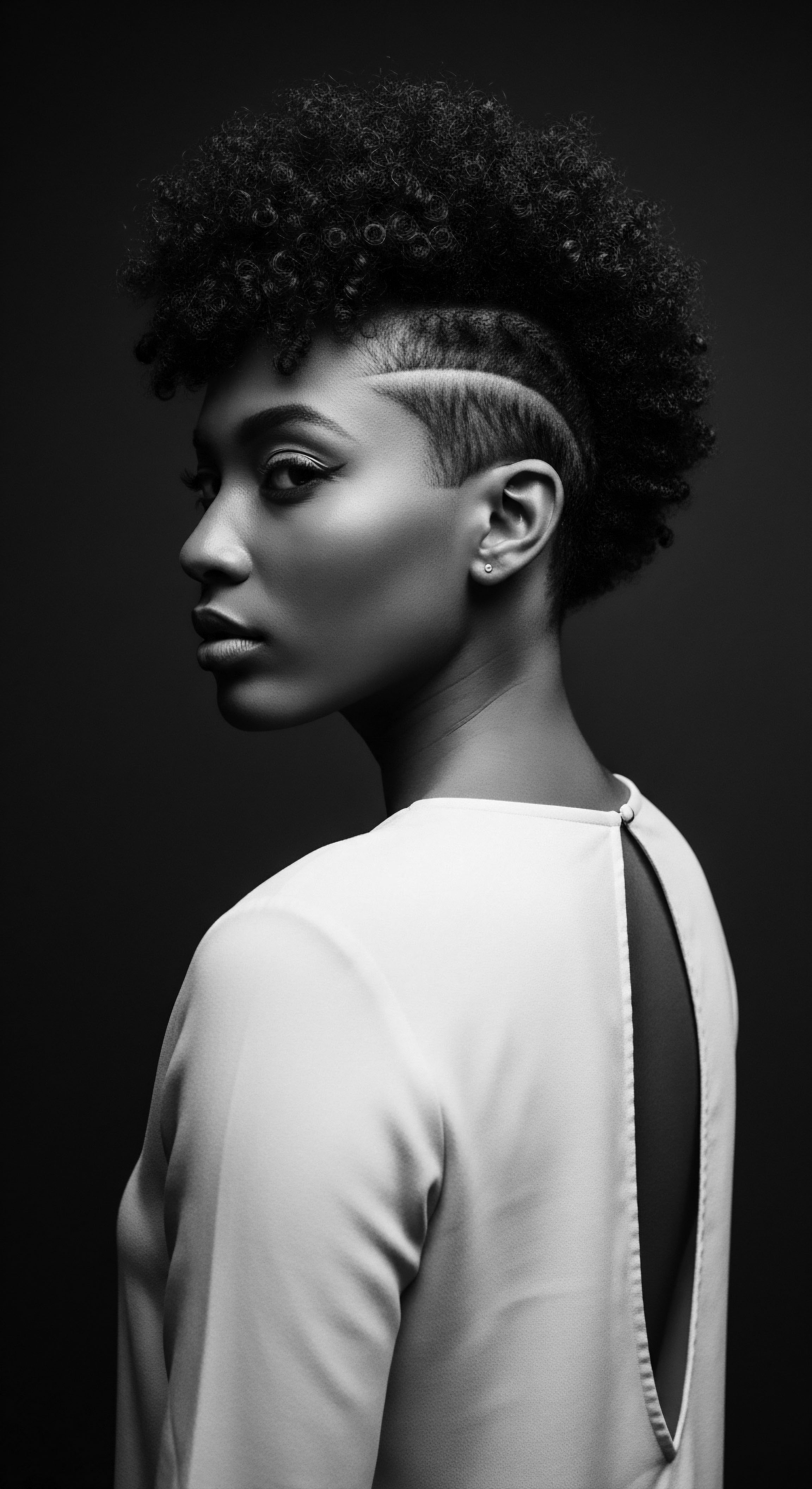
The Hair Strand’s Initial Defenses
Every strand of hair, particularly those with a coil or curl, carries an intrinsic protective quality. The very architecture of textured hair, with its elliptical cross-section and twists, contributes to a natural cushioning against external forces. This morphological characteristic helps to diffuse impact and reduce direct exposure to environmental aggressors when compared to straight hair. Observing hair through this primary lens reveals an innate strength residing within its core composition.
Beyond its shape, hair also contains its own internal mineral composition, reflecting the body’s overall health and nutritional intake. These intrinsic minerals contribute to the hair’s overall resilience and elasticity. A healthy internal environment, supported by ancestral diets rich in nutrient-dense foods, naturally promoted the hair’s ability to maintain its own defensive capabilities, serving as an initial, biological form of the Mineral Hair Shield. The interplay between internal wellness and external hair vitality was well-understood in traditional contexts.
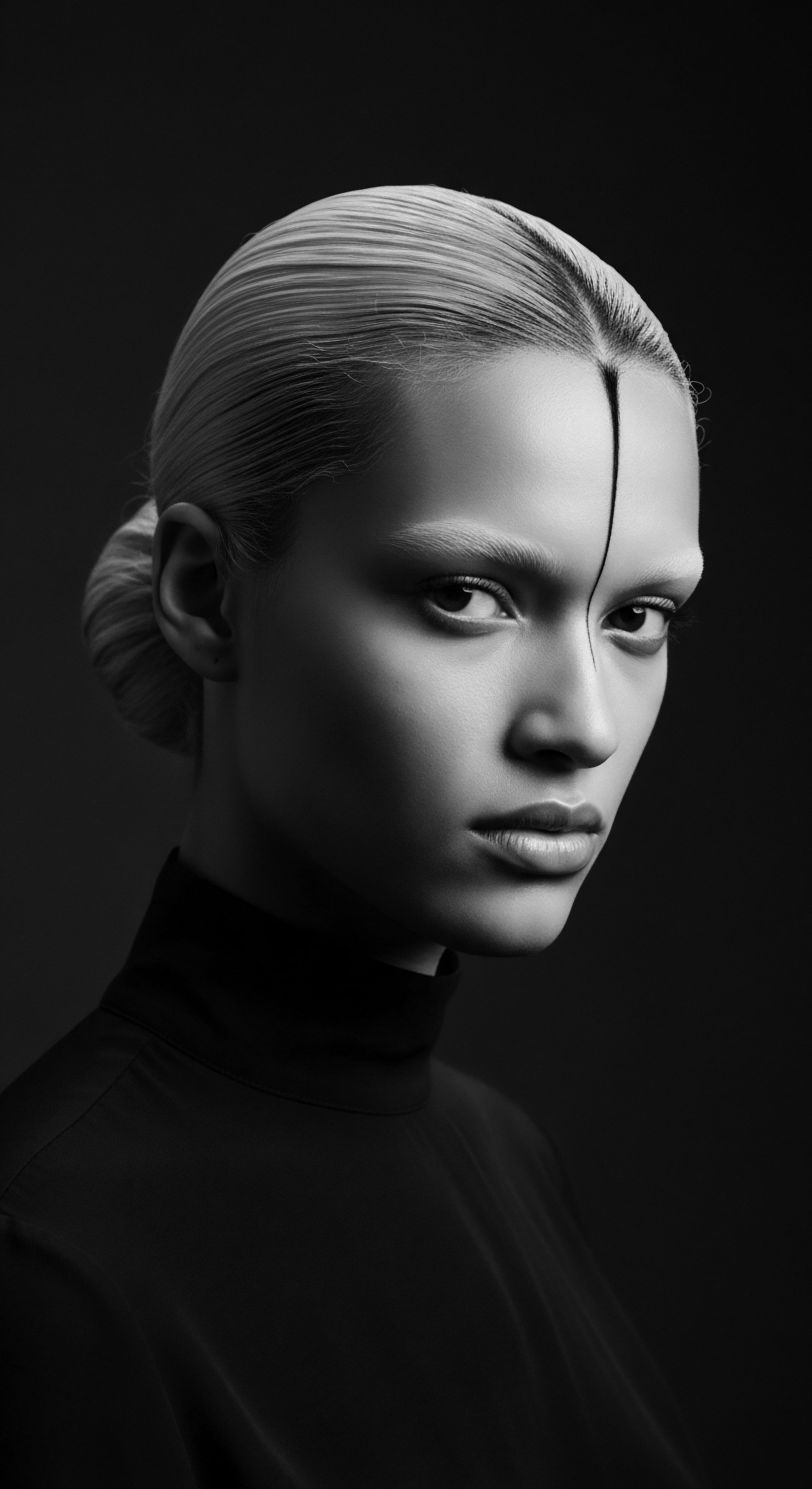
Intermediate
Progressing beyond the fundamental understanding, the Mineral Hair Shield gains richer definition as a concept encompassing the symbiotic relationship between textured hair, its indigenous care traditions, and the beneficial properties of naturally occurring elements. This interpretation expands to include not only the physical protection afforded by minerals but also the profound cultural significance intertwined with these practices across the Black and mixed-race diaspora. The shield becomes a testament to human ingenuity and deep-seated reverence for hair as a channel of identity and heritage.
Ancient civilizations recognized hair as a conduit of spiritual power and social status. This elevated perception spurred the development of elaborate care rituals, many of which incorporated mineral-rich substances. The purpose extended beyond mere aesthetics; treatments aimed to fortify the hair against harsh climates, daily activities, and symbolic threats. It illustrates a holistic approach to wellbeing, where the hair was a reflection of inner vitality and a canvas for communal storytelling.
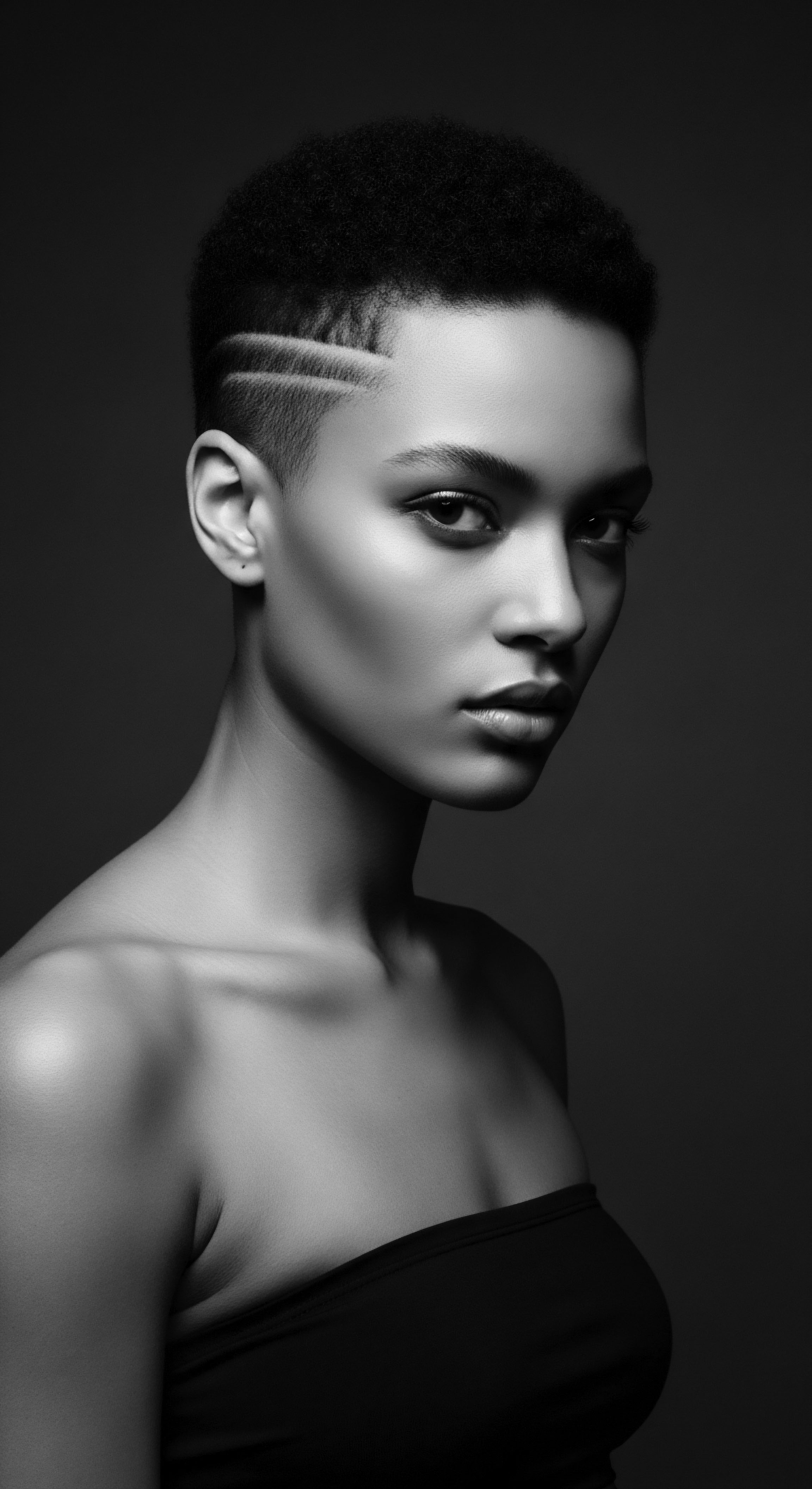
Traditional Applications of Earth’s Gifts
Many ancestral practices relied on geomaterials—clays, ochres, and specialized earths—for hair conditioning, cleansing, and protective styling. These substances often possessed a complex mineralogical profile, containing elements such as kaolin, bentonite, iron oxides, and magnesium, which contributed distinct properties. Applying these earth-derived compounds served multiple purposes ❉ absorbing excess oil, gently purifying the scalp, and adding a layer of physical fortification to the hair shaft.
Traditional hair oils, frequently infused with plant botanicals, also played a significant role in creating this shield. Ingredients like Shea Butter and various seed oils, often pressed locally, were renowned for their emollient qualities. They sealed the hair’s cuticle, reducing moisture loss and offering a barrier against environmental damage. The act of anointing hair with these oils became a ritual, a tender thread connecting generations through shared acts of care.
The historical integration of mineral-rich clays and botanical oils into hair rituals forged a protective alliance, honoring the hair’s resilience while symbolizing cultural continuity.
Consider the ritualistic use of specific powders, such as Chebe from Chad, which has gained global recognition. This traditional blend, made from a variety of indigenous ingredients, including resin tree sap, contains naturally occurring fats and minerals. When mixed into a paste and applied, it assists in strengthening hair and retaining length, particularly for tightly coiled textures. This practice represents a living example of a mineral hair shield, passed down through generations within the Basara tribe.
The methods of application were often communal and time-intensive, underscoring the social dimension of hair care. These sessions provided spaces for bonding, intergenerational teaching, and the transmission of cultural narratives. The tangible act of applying these protective substances thus transcended physical benefit, contributing to the communal fabric and sense of belonging. The Mineral Hair Shield, in this context, is not merely about individual hair health but about collective identity and the preservation of ancestral legacies.
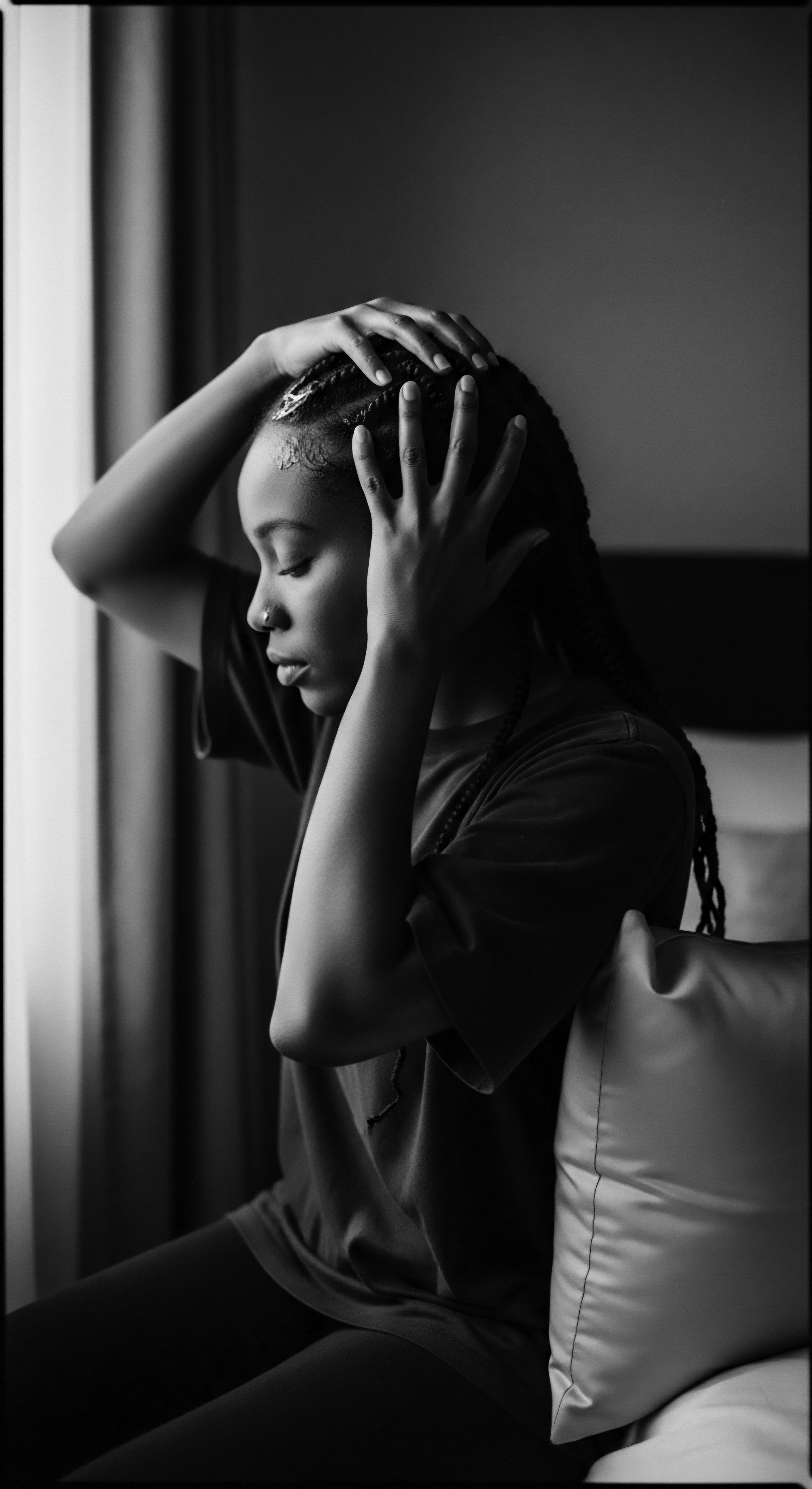
The Protective Veil of Styling
Beyond applied substances, traditional protective hairstyles themselves embodied a form of the Mineral Hair Shield. Intricate braids, twists, and locs safeguarded the hair lengths from physical abrasion, sun exposure, and daily wear. These styles minimized manipulation, allowing the hair to retain moisture and grow undisturbed. The creation of such styles often involved the use of natural fasteners or adornments, sometimes incorporating materials that themselves held symbolic or protective qualities.
The selection of these materials, whether plant fibers or metallic ornaments, was deliberate. They served to reinforce the structural integrity of the style while contributing to its aesthetic and cultural meaning. The elaborate nature of many traditional African hairstyles, requiring hours or even days to complete, underscored their significance not just as adornments, but as living expressions of heritage and protective artistry.
The resilience observed in historical accounts of textured hair, often thriving despite challenging conditions, is a testament to the efficacy of these combined approaches. The Mineral Hair Shield, understood at this level, illustrates how deep ancestral knowledge, combined with the inherent properties of natural elements, provided profound care and protection long before the advent of modern cosmetic science. It speaks to an ecological understanding of self and environment.
| Element (Traditional Name/Region) Shea Butter (West Africa) |
| Primary Composition/Source Fat from the shea nut (Vitellaria paradoxa) |
| Inferred Protective Function (Historical Use) Moisture sealant, sun protection, emollient barrier against environmental drying. Used since antiquity; Cleopatra reportedly used it for skin and hair. |
| Element (Traditional Name/Region) Chebe Powder (Chad, Basara Tribe) |
| Primary Composition/Source Blend of Lavender Croton, Prunus Mahaleb, Resin tree sap |
| Inferred Protective Function (Historical Use) Fortifies hair strands, reduces breakage, promotes length retention by sealing moisture onto the hair shaft. |
| Element (Traditional Name/Region) Rhassoul Clay (Morocco, Atlas Mountains) |
| Primary Composition/Source Mineral-rich clay (magnesium, potassium) |
| Inferred Protective Function (Historical Use) Gentle cleansing, detoxification of scalp, adds minerals, improves hair texture, and acts as a softening mask. |
| Element (Traditional Name/Region) Red Ochre / Ibomvu (Southern Africa) |
| Primary Composition/Source Pigmented iron oxide powdered clay |
| Inferred Protective Function (Historical Use) Hair treatment mask, potentially offering mineral fortification and protection against harsh environmental factors. |
| Element (Traditional Name/Region) Aloe Vera (Various African regions, global) |
| Primary Composition/Source Gel from the Aloe plant leaf |
| Inferred Protective Function (Historical Use) Hydration, soothing scalp irritation, provides essential nutrients, helps maintain hair strength and shine. |
| Element (Traditional Name/Region) These ancestral components, often used in conjunction, represent early forms of the Mineral Hair Shield, revealing deep wisdom in harnessing natural resources for hair health and cultural expression. |

Academic
The academic understanding of the Mineral Hair Shield transcends its practical applications, positioning it as a conceptual framework that synthesizes biophysical hair science, ethnobotanical knowledge, and the profound cultural anthropology of textured hair within Black and mixed-race communities. This comprehensive definition posits the Mineral Hair Shield not merely as a physical barrier, but as a dynamic interplay of inherent hair resilience, historically validated care practices, and the profound psychosocial significance of hair as a marker of identity and survival. It operates as a lens through which to examine the enduring legacy of ancestral ingenuity and adaptability in the face of environmental and systemic challenges.
At its core, the concept scrutinizes the elemental constituents that contribute to hair’s structural integrity, alongside the organic compounds and geological materials traditionally applied. Hair, composed primarily of keratin, a fibrous protein, also contains trace minerals, including calcium, zinc, iron, and magnesium, intrinsically derived from internal physiological processes and dietary intake. These minerals contribute to the disulfide bonds within the hair’s cortex, influencing its tensile strength and elasticity. The exogenous application of mineral-rich substances, therefore, can be viewed as an ancient form of bio-mineralization or external supplementation, reinforcing the hair shaft’s natural defenses and cuticle integrity.
This intellectual inquiry requires a robust engagement with ethnobotanical studies that document indigenous African hair care recipes. Such studies systematically catalog the specific plant species, clays, and oils employed, often detailing their preparation methods and perceived benefits. For example, a significant body of research points to the widespread utilization of clays across Africa for cosmetic purposes, including hair care. In the Igbo community of Nigeria, West Africa, various clays like Edo were used to dye hair.
Similarly, in Southern Africa, the red ochre clay known as Ibomvu has been used as a traditional hair treatment mask for centuries, prized for its mineral properties derived from weathered volcanic ash. Such practices highlight an empirical understanding within these communities of how specific earthen materials could nourish and protect hair.

Deepening the Historical and Cultural Connections
The Mineral Hair Shield gains additional dimensionality through the lens of cultural and historical studies of Black hair. The act of hair care in many African societies was not merely a cosmetic routine; it was a deeply communal, spiritual, and communicative practice. Hair communicated intricate social codes, signifying age, marital status, tribal affiliation, wealth, and spiritual beliefs. This profound cultural weighting meant that practices which preserved and enhanced hair health were inextricably linked to identity preservation.
The shaving of hair by slave traders, for instance, represented a deliberate act of dehumanization and cultural erasure, seeking to sever these profound connections. However, the resilience of traditional practices, even in the most brutal circumstances, saw the covert continuation and adaptation of protective hair rituals.
A powerful historical example illuminating the Mineral Hair Shield’s deep connection to textured hair heritage and ancestral practices comes from the enslaved African population in colonial Colombia. Oral histories, affirmed by ethnographic studies, reveal that women would intricately braid their hair, not solely for style, but as a covert means of communication and a literal shield for survival. One such style, known as ‘departe,’ involved thick, tight braids pulled closely to the scalp and often tied into buns. Another style featured curved braids, which were designed to visually represent the escape routes or paths to freedom.
Within these braids, enslaved individuals also concealed gold and, critically, seeds. The hiding of seeds within these protective, braided coiffures—a profound act of resistance—directly correlates with the concept of a ‘mineral hair shield’ in its broadest, most vital sense. The seeds themselves carry essential minerals and nutrients for survival in a new land, but their concealment within the hair transformed the hair into a repository of future sustenance and a living map of defiance. This practice demonstrates an extraordinary confluence of hair as a cultural symbol, a functional tool for concealment, and a literal carrier of the means of life, providing a shield not only for the hair but for the community’s future.
The very texture of African hair allowed for such sculpting and concealment, a testament to its inherent versatility and the genius of those who adapted traditional methods to serve urgent, life-sustaining purposes. This historical account underscores the intricate relationship between hair, cultural practice, and the profound stakes of survival, making the hair a potent embodiment of a shield for both physical and spiritual continuity.

Interconnectedness Across Fields
The academic definition of Mineral Hair Shield extends to the biochemical interactions between applied substances and hair. For instance, the fatty acids present in traditional emollients like Coconut Oil or Argan Oil can penetrate the hair shaft, reducing protein loss and helping to mitigate hygral fatigue, a weakening of hair from repeated wetting and drying cycles. Many plant-based ingredients also contribute vitamins, antioxidants, and anti-inflammatory compounds that benefit both scalp health and hair integrity. The presence of zinc, copper, and potassium in rooibos tea, traditionally used in South Africa, is believed to promote hair growth and strengthen strands, highlighting the mineral contribution.
Furthermore, a crucial aspect of this academic exploration involves analyzing potential long-term implications and success insights. The consistent, generations-long application of these traditional methods suggests a sustainable model of hair health that often avoids the harsh chemical treatments introduced by industrialized beauty practices. The ability of certain traditional ingredients to improve microcirculation in the scalp or to support the hair’s growth cycle from within illustrates a sophisticated understanding, even if unarticulated in modern scientific terms at the time of their inception.
Understanding the Mineral Hair Shield necessitates an intersectional approach, recognizing hair as a complex bio-cultural artifact whose care practices are interwoven with ancestral wisdom and survival narratives.
The discussion also addresses how historical perceptions of Black hair have been racialized, with tightly coiled textures often deemed “inferior” against Eurocentric beauty ideals. In this context, the deliberate practice of forming a Mineral Hair Shield – whether through styling, product application, or spiritual intention – takes on an additional layer of resistance. It becomes a conscious act of preserving cultural authenticity and self-worth, challenging dominant narratives that sought to diminish Black identity. This defiance is encapsulated in the continued wearing of headwraps, initially imposed as a marker of subservience, later reclaimed as symbols of pride and protection.
Ultimately, the Mineral Hair Shield from an academic perspective provides a robust framework for:
- Understanding Hair Biophysics ❉ Examining how the inherent structure and composition of textured hair, particularly its mineral content, contribute to its native strength and how external mineral applications reinforce these qualities.
- Ethnobotanical Documentation ❉ Systematically recording and analyzing the specific natural resources—clays, oils, herbs—used in ancestral hair care, discerning their chemical properties and their effectiveness in hair protection.
- Cultural and Social Anthropology ❉ Investigating the deep symbolic, spiritual, and communicative roles of hair within Black and mixed-race communities, and how hair care practices, including the creation of a ‘shield,’ served as mechanisms for identity preservation, communal bonding, and resistance against oppressive forces.
- Historical Continuity ❉ Tracing the evolution of hair care practices from ancient African traditions through the diaspora, demonstrating how the concept of protecting and fortifying hair through natural means has persisted and adapted across centuries.
The concept invites further cross-disciplinary investigation, recognizing the inherent wisdom in practices passed down through generations.
| Traditional Practice/Agent Hair Oiling Rituals (e.g. Shea Butter, Castor Oil) |
| Ancestral Context & Cultural Significance Deeply rooted in West African traditions, these oils sealed moisture, offered sun protection, and facilitated communal grooming sessions. They were often infused with herbs, adding medicinal properties. |
| Modern Scientific Alignment (Mechanism of Action) Lipids (fatty acids) in oils penetrate the hair shaft or coat the cuticle, reducing water loss (hygral fatigue) and providing a physical barrier against environmental damage. Vitamin E and A content offers antioxidant benefits. |
| Heritage Connection to Mineral Hair Shield Creates a hydrophobic layer, mimicking and enhancing the hair's natural lipid barrier, thereby forming a moisture and environmental shield. |
| Traditional Practice/Agent Clay Applications (e.g. Rhassoul Clay, Ibomvu) |
| Ancestral Context & Cultural Significance Used across Africa for cleansing, conditioning, and ritualistic adornment. Clays often detoxified the scalp, added minerals, and acted as hair masks. |
| Modern Scientific Alignment (Mechanism of Action) Clays possess absorbent properties due to their mineral composition (e.g. magnesium, potassium, iron oxides). They can draw out impurities while depositing trace minerals, contributing to scalp health and hair texture. |
| Heritage Connection to Mineral Hair Shield The mineral content of clays directly contributes to the 'mineral' aspect of the shield, providing both cleansing without stripping and external mineral fortification to the hair. |
| Traditional Practice/Agent Protective Styling (e.g. Braids, Locs, Headwraps) |
| Ancestral Context & Cultural Significance Served as markers of identity, status, and spiritual connection. Also functioned as practical protection from elements and as covert communication channels during enslavement. |
| Modern Scientific Alignment (Mechanism of Action) Minimizes mechanical manipulation, reduces exposure to environmental aggressors (sun, wind), and helps retain moisture by keeping hair bundled. Prevents split ends and breakage, allowing for length retention. |
| Heritage Connection to Mineral Hair Shield Acts as a macro-level shield for the entire hair mass, protecting individual strands from external damage, allowing internal protective mechanisms to function optimally. This also embodies a symbolic shield of cultural identity. |
| Traditional Practice/Agent Herbal Infusions/Rinses (e.g. Amla, Chebe, Rooibos) |
| Ancestral Context & Cultural Significance Integrated into daily care for strength, growth, and scalp health across African and Asian traditions. Often included vitamins and antioxidants. |
| Modern Scientific Alignment (Mechanism of Action) Phytochemicals (vitamins, antioxidants, minerals) present in herbs nourish hair follicles, improve scalp circulation, and strengthen hair strands from root to tip. |
| Heritage Connection to Mineral Hair Shield Provides vital micronutrients and strengthening compounds that act as a preventative internal shield, fortifying hair against cellular damage and promoting overall vitality. |
| Traditional Practice/Agent The progression from ancient wisdom to contemporary scientific understanding reveals that traditional practices intuitively created multifaceted protective systems for textured hair, underscoring the deep-seated heritage of the Mineral Hair Shield. |
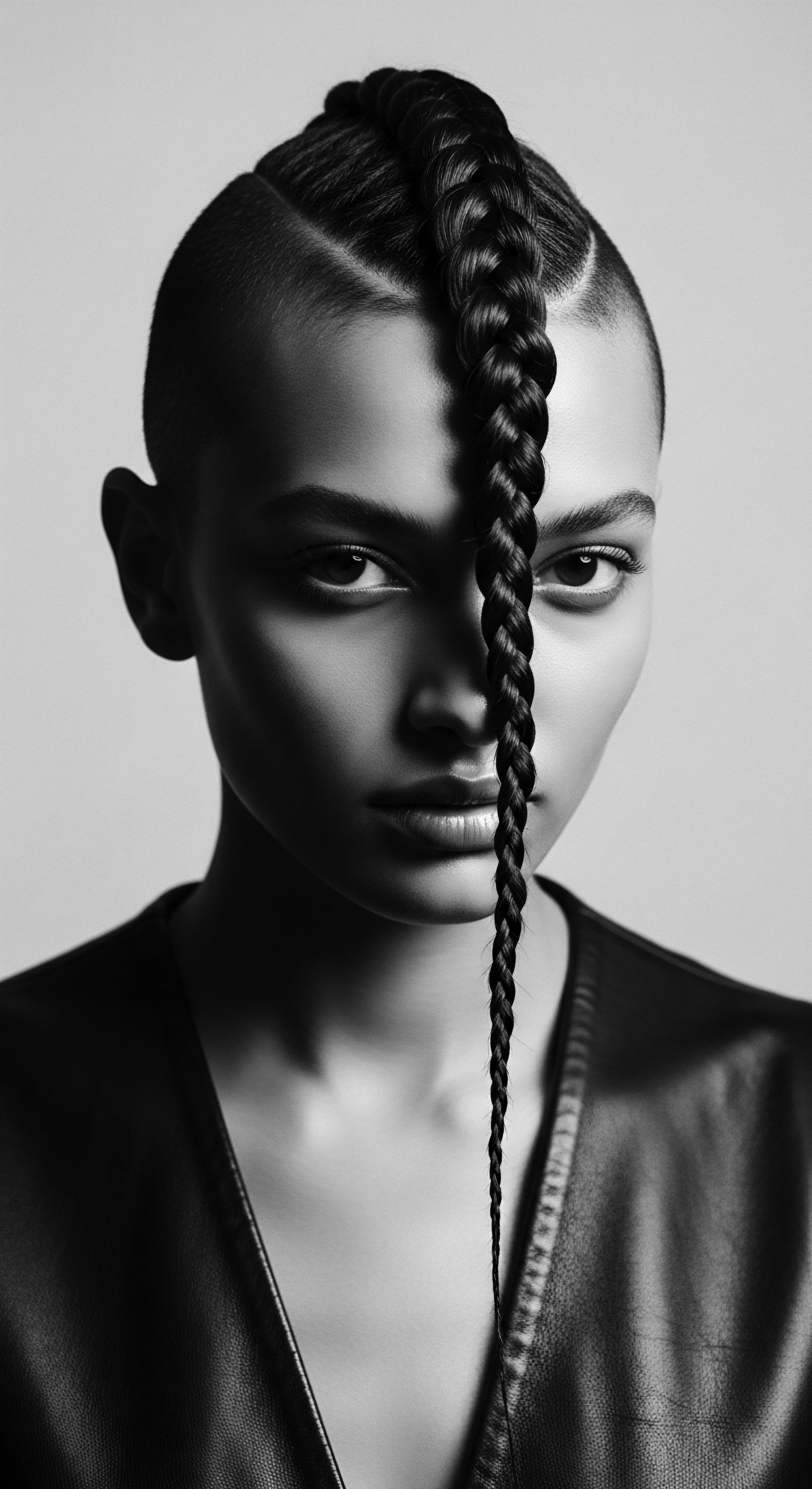
Reflection on the Heritage of Mineral Hair Shield
The contemplation of the Mineral Hair Shield invites us into a profound meditation on the enduring spirit of textured hair, its heritage, and its care. It extends beyond a simple definition, revealing itself as a living, breathing archive of ancestral wisdom. This concept stands as a testament to the resilience woven into every strand, a resilience nurtured by generations who understood the earth’s bounty and its offerings for scalp and hair. The legacy of protection, cultivated through meticulous care and deep spiritual connection, echoes in the journey of Black and mixed-race hair.
From the ancient riverbanks where natural clays offered cleansing and fortification to the shared spaces where braiding became an act of both artistry and resistance, the Mineral Hair Shield embodies a continuous conversation across time. It is a reminder that the deep care for textured hair is not a modern trend, but a reclamation of an inherent birthright. The wisdom resides in the simple, yet powerful, recognition that our hair carries not just our personal story, but the collective narrative of our forebears, a vibrant testament to their ingenuity and spirit.
This understanding beckons us to approach hair care with reverence, recognizing the sacred bond between our physical selves and the natural world, a bond honored by our ancestors through the very elements of the earth. The continuing evolution of textured hair care, informed by both ancestral practices and contemporary scientific insight, ensures that the protective essence of the Mineral Hair Shield remains vibrant and relevant for generations to come. It affirms that the soul of a strand truly reflects a heritage of strength, beauty, and unwavering self-determination.
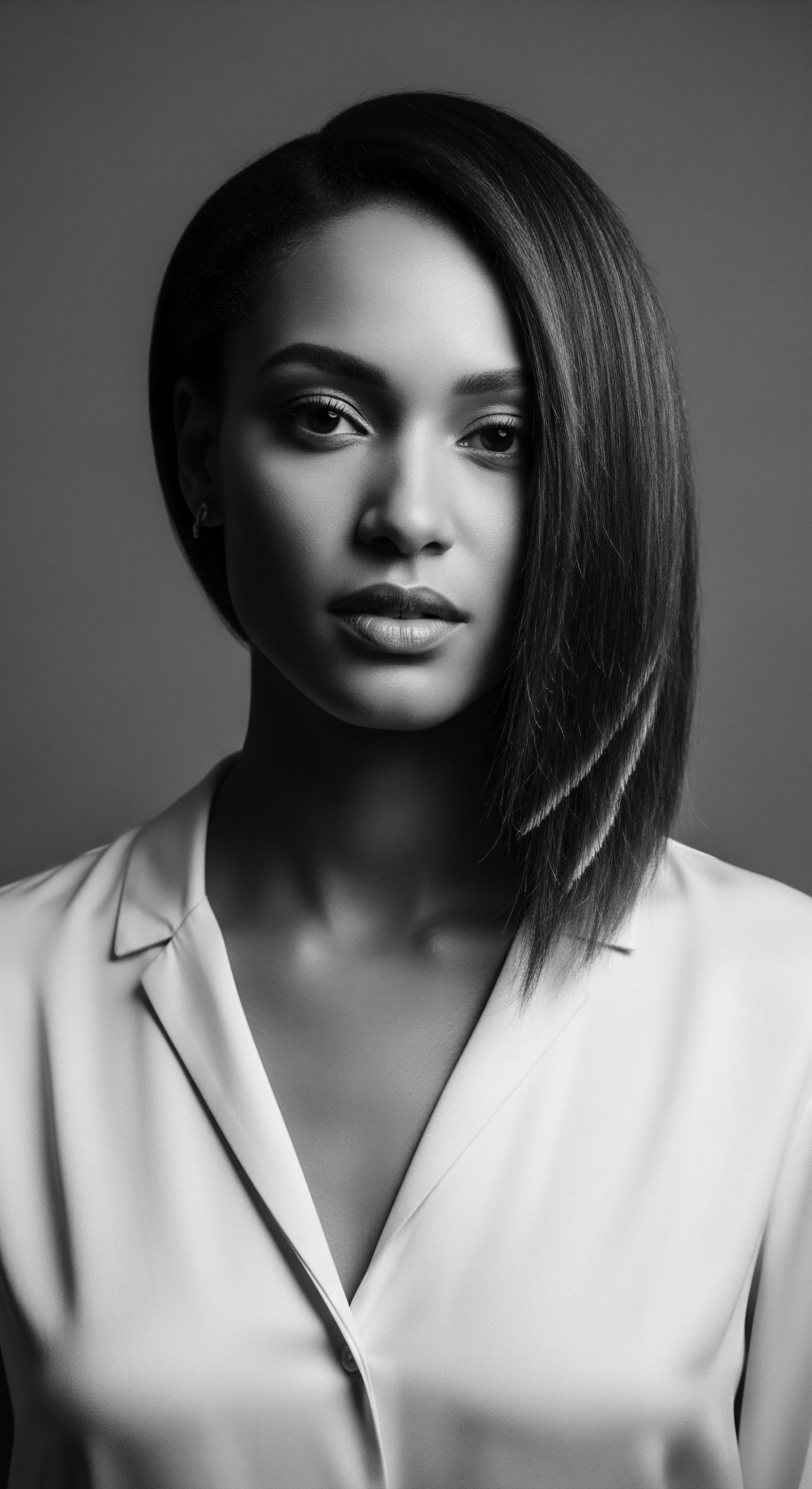
References
- Colomas, J. (2023). Unlock Ancient Hair Care Secrets ❉ Discover Global Rituals for Lustrous Locks.
- Obscure Histories. (2024). The Globalization of Shea Butter.
- Is Vietnamese Hair Naturally Healthy and Strong? (n.d.).
- Let’s Make Beauty. (2025). Best Natural Ingredients for Hair Growth.
- Odele Beauty. (2021). 6 Things Everyone Should Know About Black Hair History.
- Odebiyi, A. & Oyedeji, A. A. (2016). Ethnobotanical studies of folklore phytocosmetics of South West Nigeria. Journal of Herbal Medicine, 6(4), 162-170.
- Rthvi. (2024). Hair Care Secrets of the Past ❉ What Our Ancestors Used for Healthy Hair.
- Juniper Publishers. (2024). Cosmetic Ethnobotany Used by Tribal Women in Epe Communities of Lagos State, Nigeria.
- Design Enquiry. (n.d.). Black Hair Culture & Vernacular Visual Language.
- SEAMS Beauty. (2018). The History Of Shea Butter.
- NAK Hair. (n.d.). Ingredient Glossary.
- Ciafe. (2023). Shea Butter – Explainer.
- Krio Skincare. (n.d.). 12 African Beauty Secrets You Need to Know For Skin, Hair, & More.
- Jelani Travel. (n.d.). Head Wrap History – From South Africa to Global Fashion.
- eSkinCareStore. (2015). Hair Care ❉ Its Origin and History.
- Knight, S. M. F. & Long, W. (2021). Narratives of Black Women on Hair in the Workplace. South African Journal of Psychology, 51(3), 361-372.
- Omotoso, S. A. (2018). Gender and Hair Politics ❉ An African Philosophical Analysis. Open Journal of Philosophy, 8(3), 223-233.
- Natural Herbal Hair Care. (2024). The Benefits of Using Herbal Ingredients in Your Hair Care Routine.
- Africa Research Connect. (2024). Ethnobotany and pharmacognostic perspective of plant species used as traditional cosmetics and cosmeceuticals among the Gbaya ethnic group in Eastern Cameroon.
- University of Michigan. (n.d.). Black Women and Identity ❉ What’s Hair Got to Do With It?
- Obé Headwear. (2024). Significance of headwraps | Hair care.
- Ibomvu ❉ The Holy Grail clay used as a beauty treatment by the people of Southern Africa. (n.d.).
- Thirteen Lune. (n.d.). Discovering the Cultural Heritage of Shea Butter.
- Al-Sha’er, L. et al. (2017). Ethnopharmacological survey of home remedies used for treatment of hair and scalp and their methods of preparation in the West Bank-Palestine. BMC Complementary and Alternative Medicine, 17(1), 337.
- Rthvi. (2024). Exploring Ancient Hair Care Rituals ❉ Timeless Practices for Modern Hair Wellness.
- GSC Online Press. (2024). Phytochemicals in hair care ❉ A review of natural ingredients and their applications.
- Vaughan’s Holistic Hair Clinic & Wellness Spa. (2024). Black Hair Growth ❉ A Comprehensive Guide.
- Grand Textures by Janay. (2024). Exploring the Origins of Sun Protection and Beauty Rituals in Ancient African, Mexican, and Polynesian Traditions.
- Africa Imports. (n.d.). Traditional African Secrets For Long And Healthy Hair.
- American Couple Reacts “A History Of African Hairstyles Used As Maps To Escape Slavery”. (2023).
- Spartan Shield. (2022). Protecting their roots ❉ CROWN Act gives hope to Black women.
- Tea’s Nature. (2020). The History of Shea Butter.
- Lemon8. (2025). The Cultural Significance of Hair in Ancient China.
- Reddit. (2021). No raw oils and butters vs. Traditional African hair care? ❉ r/Naturalhair.
- Obscure Histories. (2024). Ancient Gems ❉ A Historical Survey of African Beauty Techniques.
- Byrd, A. & Tharps, L. L. (2001). Hair Story ❉ Untangling the Roots of Black Hair in America. St. Martin’s Press.
- McClelland, R. C. (1998). Hair in African Art and Culture. African Arts, 31(1), 66-99.
- Elom African Braids. (2023). The History and Cultural Significance of African Hair Braiding.
- Dermatology for All. (2025). Historical Perspectives on Hair Care and Common Styling Practices in Black Women.
- Ancestral Nutritions. (2024). Best Supplements for Healthier Hair and Nails.
- Smith Scholarworks. (n.d.). The natural hair transformation ❉ a journey of resilience and resistance.
- Jacobs-Huey, L. (2006). From the Kitchen to the Salon ❉ Language, Power, and Identity in Black Women’s Hair Care. Oxford University Press.
- Brummitt, K. et al. (2024). Cosmetopoeia of African Plants in Hair Treatment and Care ❉ Topical Nutrition and the Antidiabetic Connection? Plants, 13(3), 444.
- Atelier 55. (n.d.). Traditional African Hairstyles Inspire Magodi, a Series of Ceramic Sculptures.
- Ari Party Hair. (2025). The History and Symbolism of Hair Wrapping Across the African Diaspora.
- Substack. (2025). Ancestral Hair Rituals to Nourish Your Hair and Soul.
- Sabinet African Journals. (n.d.). Indigenous knowledge applied to the use of clays for cosmetic purposes in Africa ❉ an overview.
- FSU The Voice. (2017). African American Hairstyles and Ancient African Tribe History.
- Contested Identities ❉ African Diaspora and Identity Making in a Hair Braiding Salon. (n.d.).
